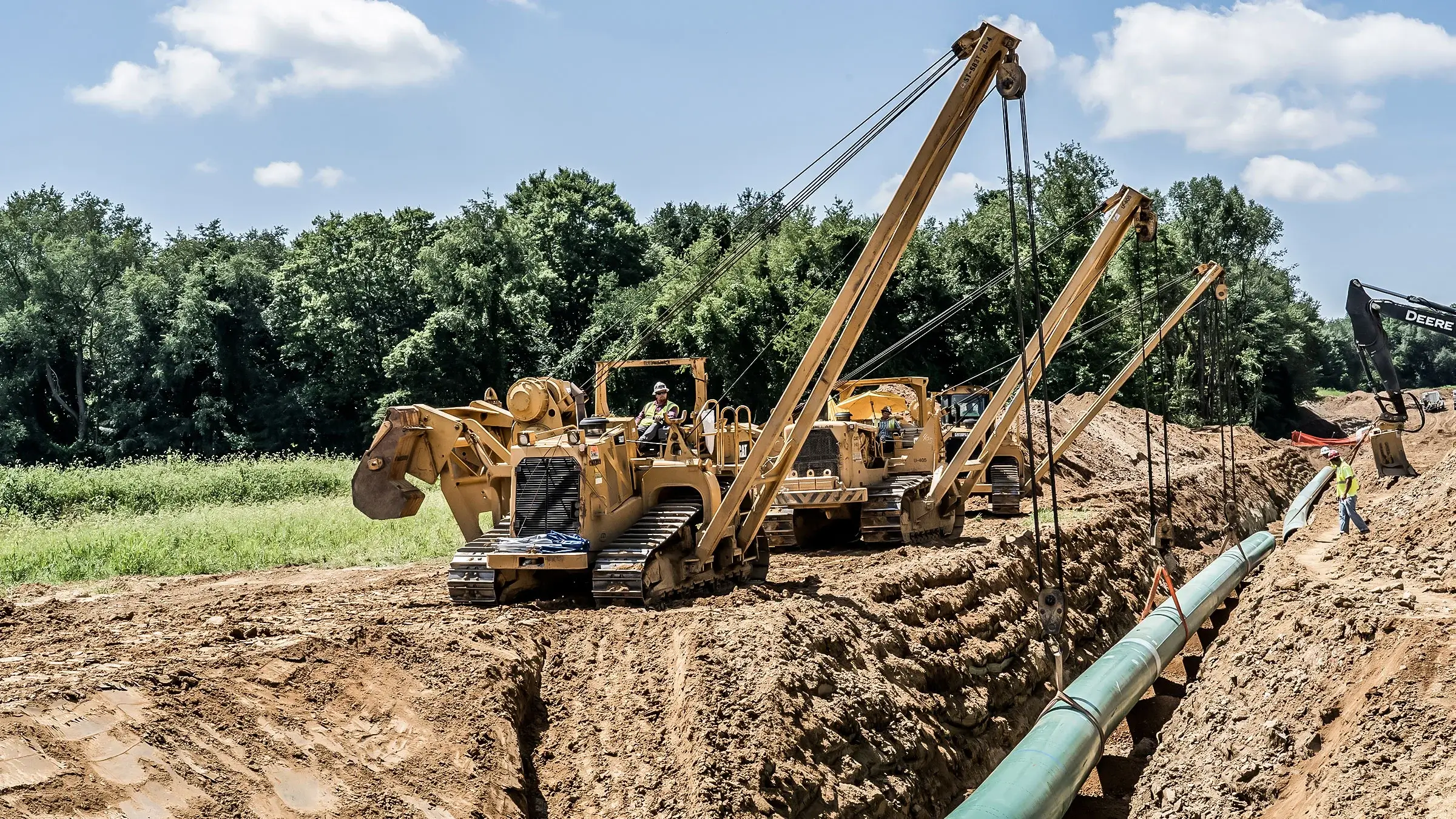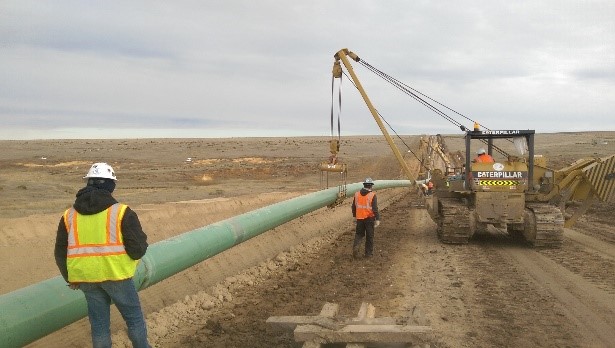Everything to Know About Pipelines Built by Creek Pipe Texas
Wiki Article
A Comprehensive Guide to Recognizing Pipelines and Their Role in Construction
Pipelines are necessary components in building and construction, serving important functions in gas, water, and waste management. Their option and application can significantly influence a structure's efficiency and security. Various products, such as PVC, copper, and PEX, provide distinct advantages suited to certain demands (Creek Pipe Pipeline Construction). Recognizing these variables is key for any kind of building and construction project. As one checks out the ins and outs of pipes, the ramifications for compliance and public health come to be significantly evidentThe Relevance of Water Lines in Building
Pipes function as vital channels in building and construction, facilitating the movement of water, gas, and waste throughout buildings and framework. Their duty extends beyond mere transport; they are crucial for ensuring the capability and safety of property and industrial atmospheres. Appropriately mounted pipes add to the efficient distribution of sources, making it possible for day-to-day tasks such as bathing, food preparation, and heating. In addition, pipelines play an essential function in waste management, making certain that sewage and wastewater are properly gotten rid of from living spaces.The importance of pipes is additionally mirrored in their influence on public health. Poor or faulty piping systems can bring about contamination and harmful problems, making quality materials and installment practices crucial. Furthermore, pipes must adhere to various building codes and policies, which are designed to protect both occupants and the setting. Consequently, the significance of pipelines in building and construction includes both practical functionality and vital health factors to consider.Kinds Of Water Lines Utilized in Structure Projects
Different types of pipelines play a significant function in building tasks, each designed to meet certain demands and applications. Among one of the most commonly utilized pipeline types are PVC, which is immune and lightweight to corrosion, making it suitable for drainage and air vent systems. CPVC pipelines, similar to PVC, can withstand higher temperatures, usually used in warm water systems. Copper pipelines are recognized for their toughness and integrity, frequently utilized in plumbing and heating applications. Galvanized steel pipelines, while much less common today, were when a criterion for water lines because of their stamina. In Addition, PEX (cross-linked polyethylene) pipelines are obtaining appeal for residential pipes due to their versatility and resistance to scaling and chlorine. Cast iron pipelines are preferred for their sound-dampening residential or commercial properties, typically used in waste and dirt systems. Each pipe type serves distinctive features, making certain reliable operation in construction projects.Typical Materials for Pipes and Their Characteristic
In construction, the selection of pipeline materials is vital for guaranteeing longevity and capability. Steel pipes offer toughness and resistance to high stress, while plastic pipelines supply corrosion-resistant and lightweight choices. Compound pipes incorporate the benefits of both products, making them flexible alternatives for numerous applications.Metal Pipeline Options
Metal pipes are integral parts in building and construction, providing a variety of choices that satisfy various applications and ecological conditions. One of the most common materials include steel, copper, and cast iron. Steel pipelines are recognized for their strength and sturdiness, making them ideal for high-pressure applications. Copper pipelines are preferred for their rust resistance and antimicrobial residential properties, usually used in pipes systems. Cast iron pipelines offer excellent sound insulation and are ideal for waste and water drainage systems. Each metal type has distinctive advantages; for example, galvanized steel can stand up to rust, while stainless steel uses exceptional corrosion resistance. Picking the proper steel pipe depends on aspects such as price, ecological direct exposure, and the details requirements of the building and construction job.
Plastic Pipeline Advantages
Plastic pipelines have actually gotten appeal in construction as a result of their lightweight nature and convenience. These pipes, made from materials such as PVC, CPVC, and PE, offer exceptional resistance to rust and chemical damage, making them suitable for numerous applications. Their ease of installation additional boosts their appeal, as they can be reduced and signed up with without unique devices. Furthermore, plastic pipelines are typically extra economical compared to steel choices, adding to reduced overall task costs. Their smooth interior surfaces minimize friction and improve flow prices, while insulation residential or commercial properties help keep temperature level control in pipes systems - Creek Pipe Company LLC. With a wide variety of configurations and dimensions offered, plastic pipes efficiently fulfill the diverse demands of modern-day building and construction jobsCompound Pipeline Characteristics
Compound pipes integrate various products to take advantage of their individual toughness, leading to enhanced efficiency and durability. Normally, these pipes contain layers that may include porcelains, steels, and plastics, each contributing one-of-a-kind residential properties. The internal layer might be made of a corrosion-resistant product, while the external layer provides strength and influence resistance. This combination allows composite pipes to endure severe temperature levels and stress, making them ideal for a large range of applications, including water and industrial procedures. Additionally, composite pipes are usually lighter than traditional products, facilitating simpler handling and setup. Their convenience and adaptability to different atmospheres make them a recommended selection in modern building tasks, making certain longevity and efficiency in liquid transportation systems.Applications of Pipes in Pipes Solutions

Electric Avenues: The Function of Pipeline in Electrical wiring
In modern building, electric conduits play an essential function in guaranteeing the risk-free and effective routing of electrical circuitry throughout structures. These pipelines provide a safety pathway for electrical wires, safeguarding them from physical damages and environmental factors. Different materials, such as PVC, metal, and adaptable conduits, are utilized relying on the certain needs of the installation.Furthermore, avenues assist in organizing wiring systems, minimizing the threat of electrical risks like short circuits or fires. They additionally facilitate simpler maintenance and upgrades, as cables can be accessed and changed without considerable interruption to the structure.Proper installment of electric avenues is important for compliance with building ordinance and safety and security policies. This structured technique not only enhances the longevity of the electric system but also contributes to the total security and performance of the building, making electrical conduits indispensable in modern building and construction practices.Selecting the Right Pipe for Your Project
How can one ensure the appropriate pipe option for a building and construction job? The option procedure begins with recognizing the details demands of the task, consisting of the kind of liquids being carried, pressure rankings, and ecological conditions. Product alternatives, such as Copper, pvc, and steel, need to be evaluated based on toughness, rust resistance, and thermal properties.Next, one have to think about the pipe's size and flow capability to establish effective operation. Governing standards and codes must likewise be stuck to, as they determine the appropriate products and practices for particular applications. Consulting with specialists and utilizing comprehensive sources can even more assist in making educated decisions.Finally, evaluating the cost-effectiveness of different options is vital, stabilizing initial expenses with long-lasting maintenance and substitute costs - Creek Pipe Company. By diligently assessing these elements, one can with confidence pick the most appropriate pipeline for their building project, guaranteeing both capability and compliance
Maintenance and Examination of Water Lines in Building and construction
Appropriate option of pipelines establishes the foundation for their long-lasting performance, making upkeep and inspection important elements in building. Normal upkeep warranties that any type of prospective concerns, such as leaks, deterioration, or clogs, are recognized and addressed promptly, reducing costly repair work and project delays. Scheduled inspections, consisting of visual analyses and stress examinations, play a crucial function in assessing the honesty of pipeline systems.Additionally, keeping track of ecological variables, such as temperature fluctuations and dirt problems, can aid anticipate deterioration. Using innovative modern technologies, such as CCTV for indoor assessments, can improve the performance of maintenance initiatives. It is important to document inspection searchings for and maintenance tasks to develop a comprehensive background of the pipeline systems. By focusing on maintenance and evaluation, building and construction professionals can extend the Creek Pipe Midland life-span of their piping systems, ensuring they operate effectively and dependably throughout the project's duration.Regularly Asked Concerns
Just How Do Pipes Affect Energy Efficiency in Buildings?
Pipelines considerably affect power performance in buildings by controling home heating and cooling down systems. Correct insulation and products reduce energy loss, while effective pipes layouts lessen water usage, ultimately bring about reduced energy intake and functional costs.What Regulations Govern Pipeline Installation in Building And Construction?
Rules regulating pipe setup in building and construction usually include nationwide and neighborhood building ordinance, plumbing codes, and security requirements. These guarantee conformity with structural stability, product specifications, and health requirements, advertising security and effectiveness in building methods.Can Water Lines Be Recycled After Use?
The question of pipe recyclability is substantial. Many materials, such as metal and particular plastics, can be recycled properly. The problem and type of pipeline influence recycling usefulness, demanding proper analysis prior to disposal.
How Do Weather Problems Impact Pipeline Efficiency?
Weather conditions considerably affect pipeline performance. Extreme temperature levels can create growth or tightening, while dampness may result in corrosion. In addition, heavy rainfall can enhance soil stress, influencing stability and overall functionality of the piping system.What Are the Indicators of Pipe Failure to Look For?
Indications of pipeline failing consist of leakages, unusual sounds, discoloration of water, decreased water stress, and noticeable rust. Regular examinations can help detect these concerns early, ensuring and preventing pricey repair work system capability in the long-term. Pipelines play a pivotal role in waste monitoring, guaranteeing that sewage and wastewater are successfully removed from living spaces.The relevance of pipes is likewise mirrored in their influence on public wellness. In construction, the option of pipe materials is vital for ensuring longevity and performance. Metal pipes supply strength and resistance to high stress, while plastic pipelines give lightweight and corrosion-resistant options. In addition, pipelines are utilized to eliminate wastewater, attaching commodes, sinks, and drains pipes to local sewer systems or septic tanks.Different kinds of pipelines, such as PVC, copper, and PEX, are picked based on variables like sturdiness, price, and specific application demands. How can one assure the best pipeline option for a building task?Report this wiki page